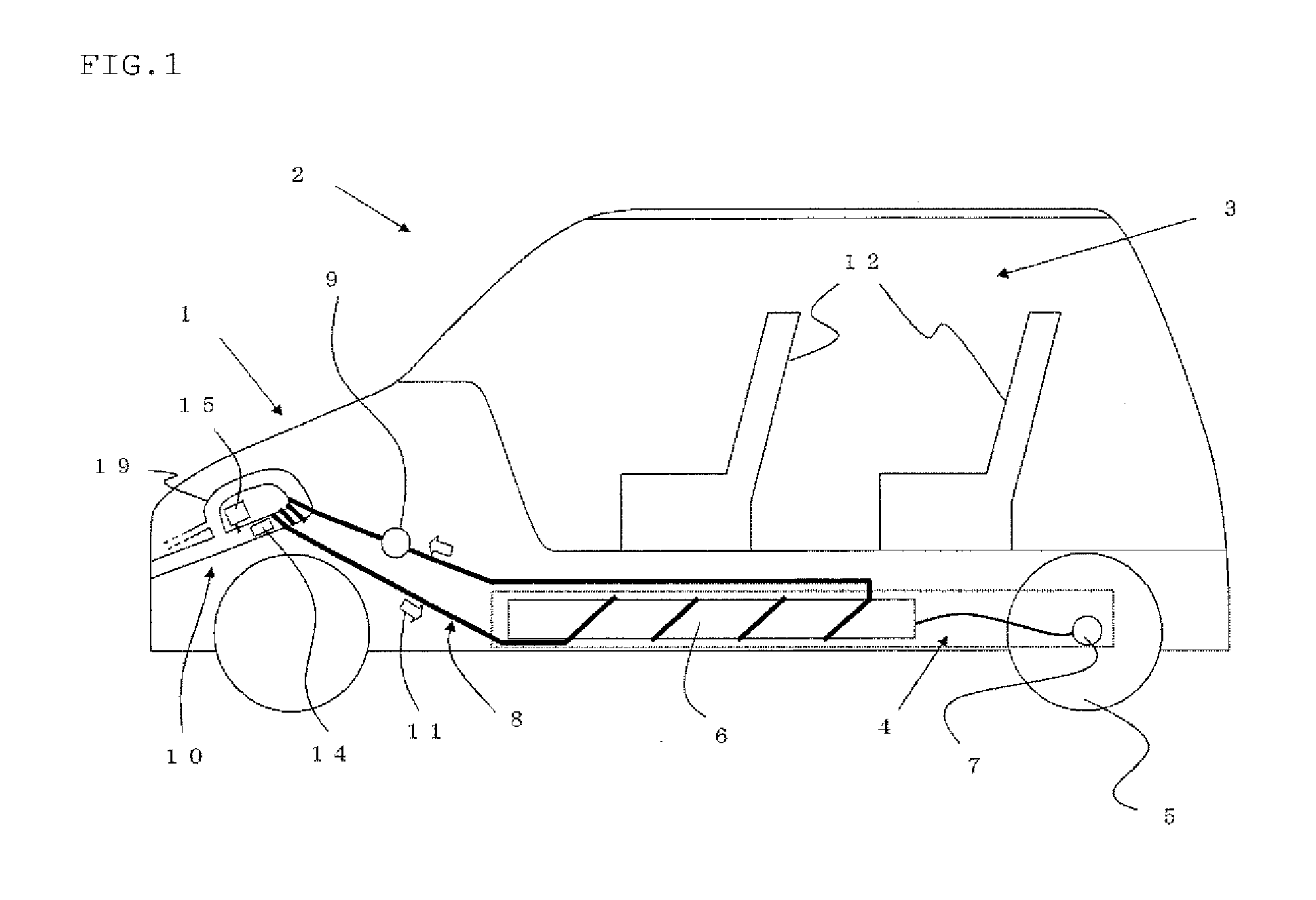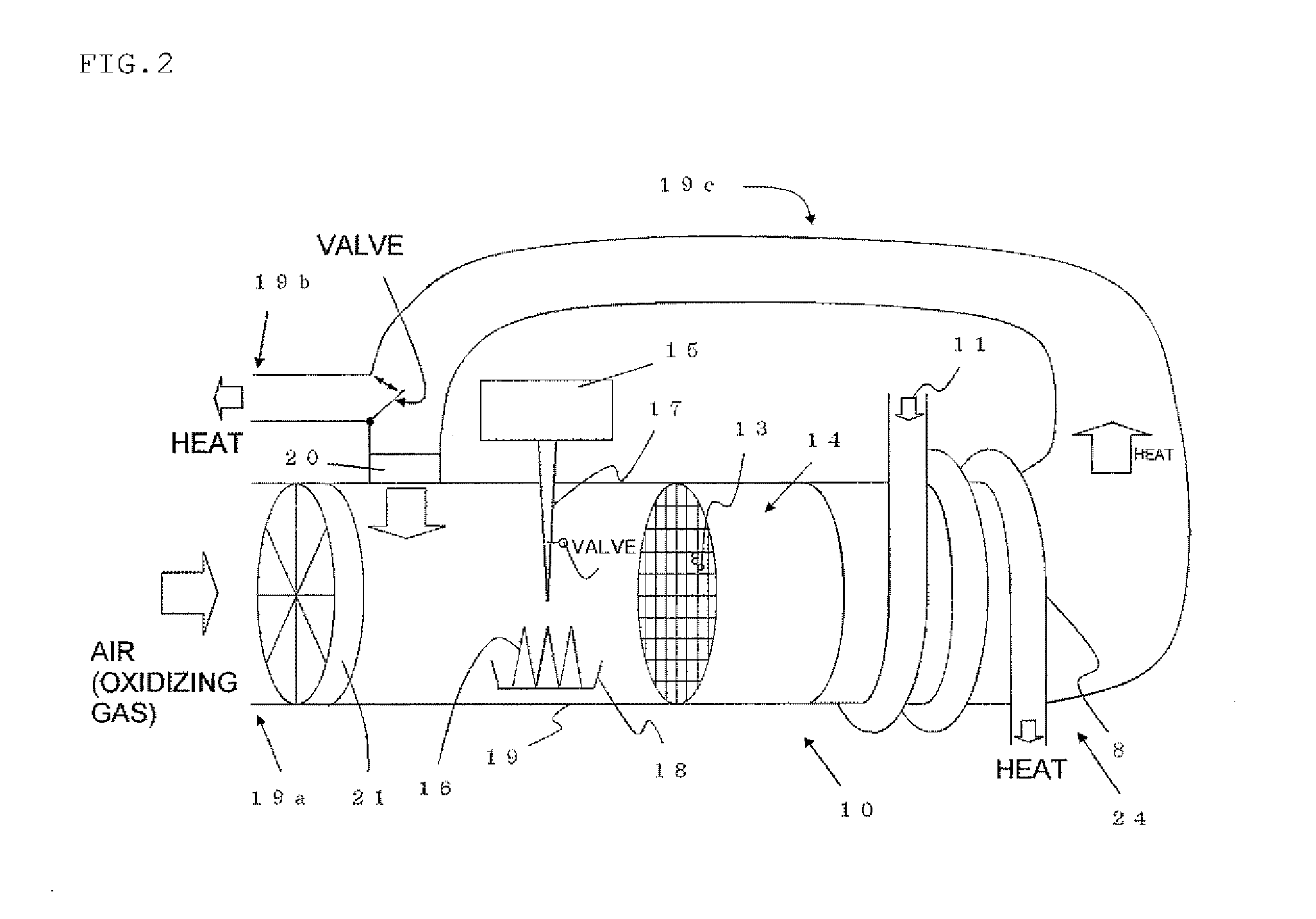Temperature control system
a temperature control and control system technology, applied in the field of temperature control systems, can solve the problems of increasing carbon dioxide, deteriorating performance of running, and affecting the performance of electric vehicles and the like, so as to prevent the deterioration of automobile and the like performance, control easily and efficiently, and maintain the effect of low consumption of power for secondary cells or the lik
- Summary
- Abstract
- Description
- Claims
- Application Information
AI Technical Summary
Benefits of technology
Problems solved by technology
Method used
Image
Examples
example 1
[0153]The temperature control system 1 of the present invention having the catalytic heater 10 as illustrated in FIG. 2 was prepared (the liquid sending pipe 8 was inserted into the seat 12 prepared separately as in FIG. 8), and by using such temperature control system of the present invention, an experiment was conducted in which, under an environment with an outside air temperature of 0° C., air and a fuel were made to react with each other on the catalyst 13 in the catalytic heater 10 and a part of them was circulated so as to generate heat and to heat the secondary cell 6 and the seat 12 through the liquid sending pipe 8 and the temperature-control duct 27, and a space having substantially the same size as that of the cabin was heated through the air-conditioning duct 28 for a predetermined period of time and kept at a certain temperature (20° C.) (a system as in FIG. 10).
[0154]The secondary cell and the seat were heated so as to have the same temperature when the outside air te...
example 2
[0162]In addition to the equipment similar to that in the Example 1, the thermoelectric element 26 was further arranged.
[0163]The thermoelectric element 26 was connected to the vicinity of the catalyzer 14 and the downstream thereof in the duct 19 as illustrated in FIG. 9. Only a small amount of methanol which is the fuel was supplied, and power generation was attempted by the Seebeck effect caused by a temperature difference at the aforementioned spot while the system was operating.
[0164]When the temperature of the vicinity of the catalyzer at this time (defined as a temperature of the catalyzer) and the temperature of the downstream region thereof (defined as a temperature of the gas after reaction) were measured, a graph in FIG. 13 was obtained.
[0165]As is known from FIG. 13, the temperature of the catalyzer itself rises to approximately 200° C. On the other hand, the gas temperature rises to approximately 430° C. By means of the temperature difference of as much as 200° C. or mo...
PUM
 Login to View More
Login to View More Abstract
Description
Claims
Application Information
 Login to View More
Login to View More - R&D
- Intellectual Property
- Life Sciences
- Materials
- Tech Scout
- Unparalleled Data Quality
- Higher Quality Content
- 60% Fewer Hallucinations
Browse by: Latest US Patents, China's latest patents, Technical Efficacy Thesaurus, Application Domain, Technology Topic, Popular Technical Reports.
© 2025 PatSnap. All rights reserved.Legal|Privacy policy|Modern Slavery Act Transparency Statement|Sitemap|About US| Contact US: help@patsnap.com



